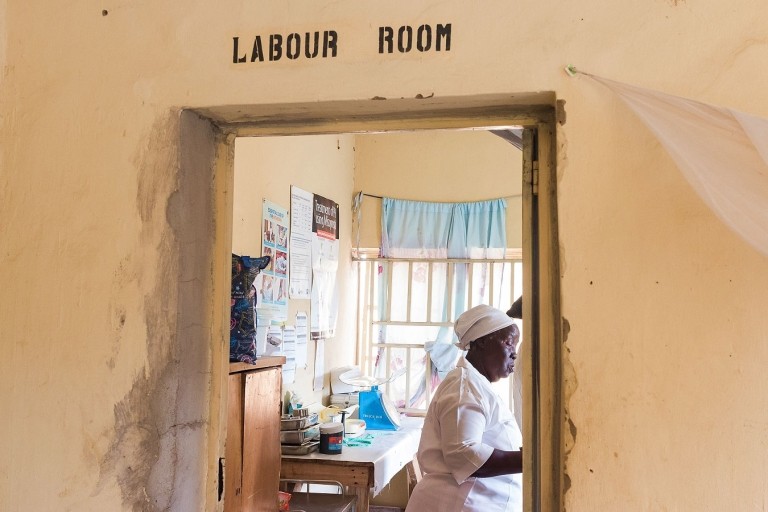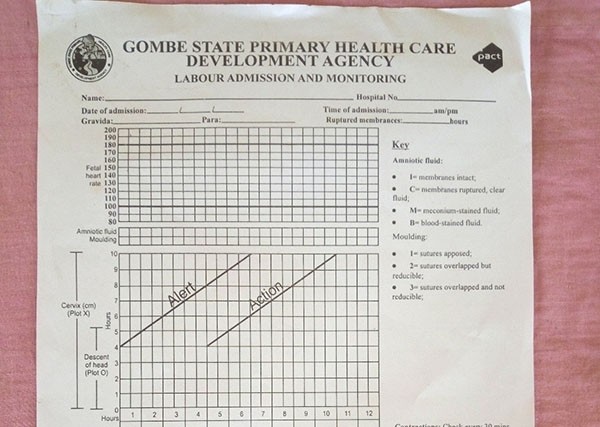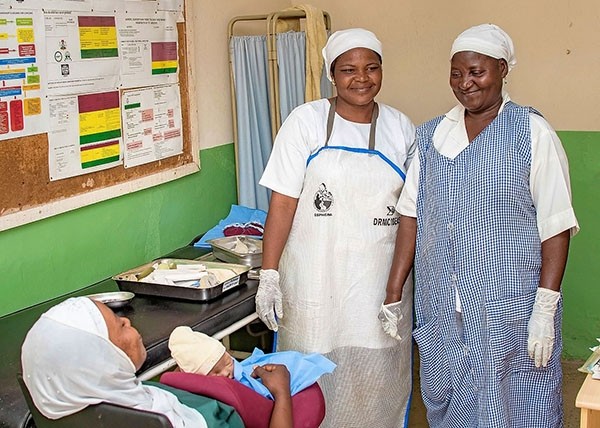Blog
Saving lives in a low-resource setting: The big deal about the partograph

by Pact Nigeria
Ask frontline healthcare workers across Gombe State about improvements in patient care, and nearly all of them, from doctors to nurses to midwives, will mention one thing – the partograph.
Before, we weren’t using the partograph, they’ll say. Now, we all use it correctly, every time.
The partograph isn’t a new miracle drug or healthcare’s latest technology. Instead, it’s about as low-tech and inexpensive as it gets. Sometimes called a partogram, the partograph is a single sheet of paper where healthcare workers keep a composite record of critical data, entered against time, about mother and baby during childbirth. Data points include cervical dilation, fetal heart rate, descent of the baby’s head and mom’s vital signs. The partograph’s power is in its ability to alert caregivers to maternal and fetal complications that require action. This is why the World Health Organization recommends it for monitoring the progress of labor and for the early detection of life-threatening problems.
The partograph has been used in health facilities for decades, but across Gombe State, few healthcare workers took advantage of it before the State Accountability for Quality Improvement Project, or SAQIP.

With funding from the Bill & Melinda Gates Foundation, SAQIP was launched in 2014 to improve maternal, neonatal and child health services in Nigeria, where maternal and neonatal mortality rates are among the highest in the world. The country accounts for up to 14 percent of the total global burden of maternal deaths and 6 percent of newborn deaths. The country’s northeast region comprised of Gombe State has the highest maternal mortality rate of 1,549 per 100,000 live births.
SAQIP, which is implemented by Pact, is changing this by building the capacity of the Gombe State Primary Health Care Development Agency and its local government area (LGA) structures to carry out their mandate to provide quality maternal, neonatal and child health services.
Improving healthcare workers’ capacity to correctly use the partograph was among SAQIP’s goals. The project used a range of interventions in 57 wards across 11 Gombe State LGAs, including clinical trainings, clinical mentorship and more. In addition to learning how to use the partograph, hundreds of health workers in primary, secondary and tertiary health facilities have learned other basic and emergency obstetric and newborn care skills, including management of postpartum hemorrhage and pre-eclampsia/eclampsia, manual removal of the placenta, hand hygiene and newborn resuscitation.
Research indicated that while some health workers were trained on and had positive attitudes toward the partograph, this did not consistently translate into the use of the form. SAQIP addressed this through clinical mentorship, which brought in retired midwives who were trained to mentor younger midwives in providing quality care.

“We have seen noticeable changes through the help of the mentors,” says Aisha Usman, the officer in charge at Gombe’s Tudun Wada Primary Health Center. “The attitude of my staff has improved very much. I can tell you that almost all my staff in the labor ward can use the partograph to monitor progress of labor.”
SAQIP also built support for the partograph’s use among community members. SAQIP shared knowledge about the form’s importance with local Ward Development Committees, which oversee primary health centers. The committees then worked to build awareness, with some even printing and distributing copies of the partograph and advising pregnant women to ask that it be used to monitor their labor.
With SAQIP’s help, the percentage of Gombe State deliveries monitored with the partograph has increased from 2.5 percent to 76 percent as of May – a clear indication of both health workers’ acceptance of the tool and of its ease of use.
Dr. Mariam Abubakar, head of the pediatric unit at Gombe State Specialist Hospital and a master trainer with SAQIP, says the change is already making a difference for mothers and babies.
“The use of partograph is near perfect at the primary health center level in Gombe State,” she says.